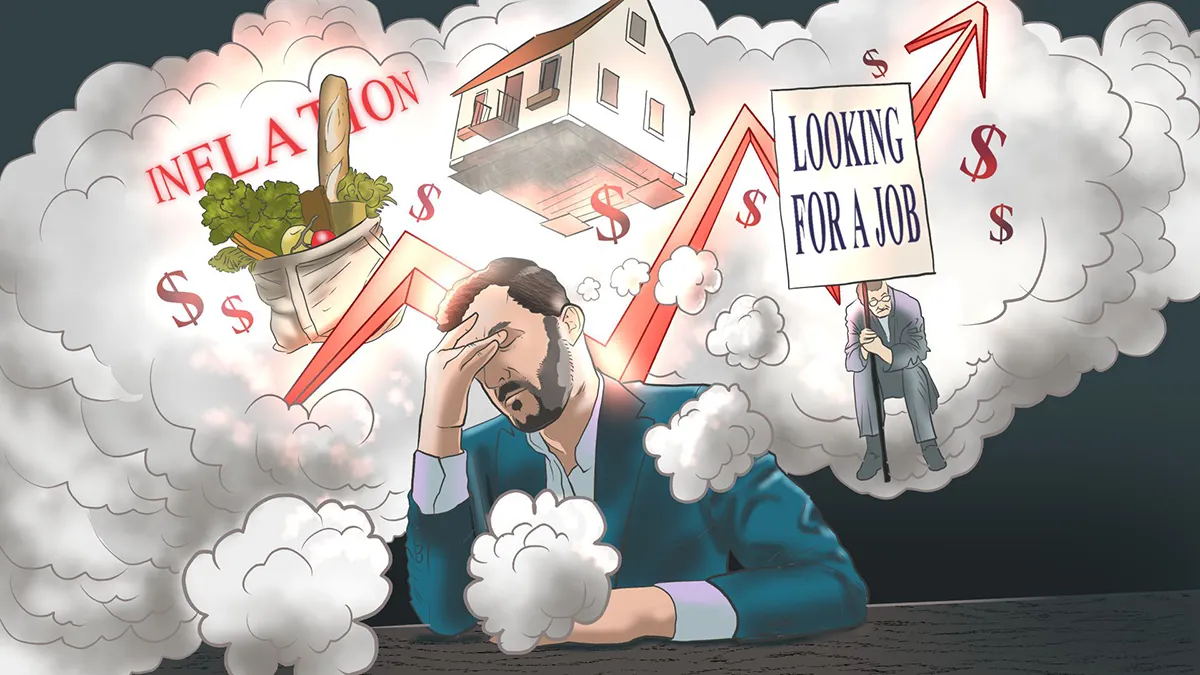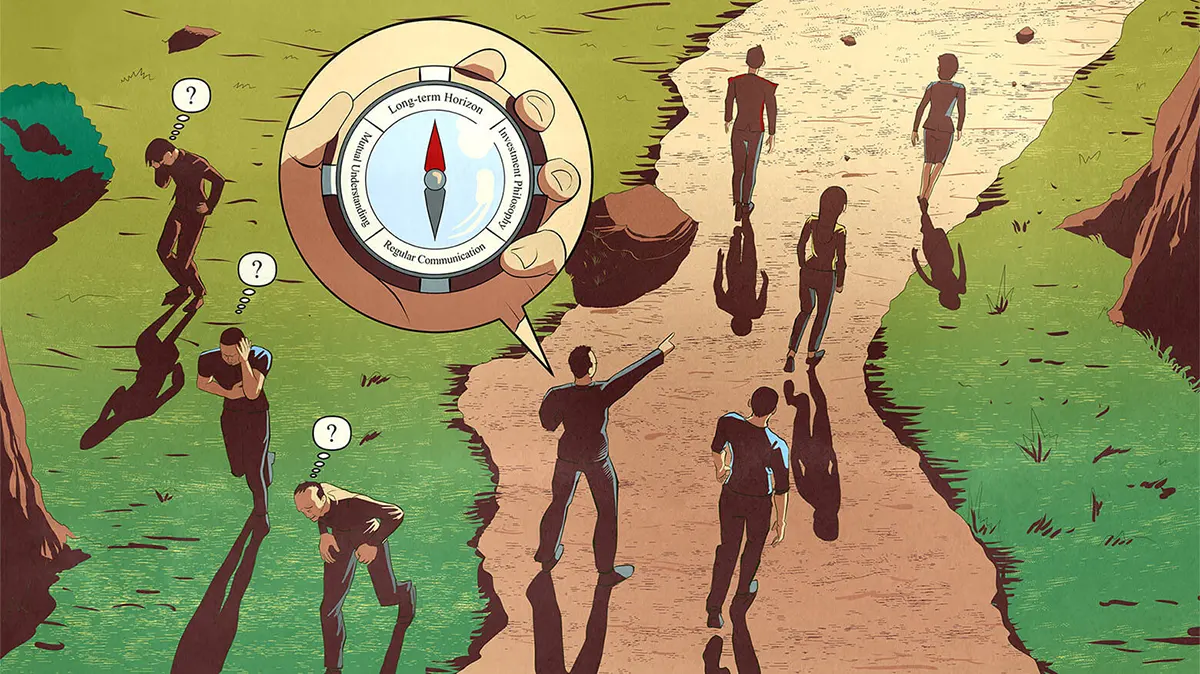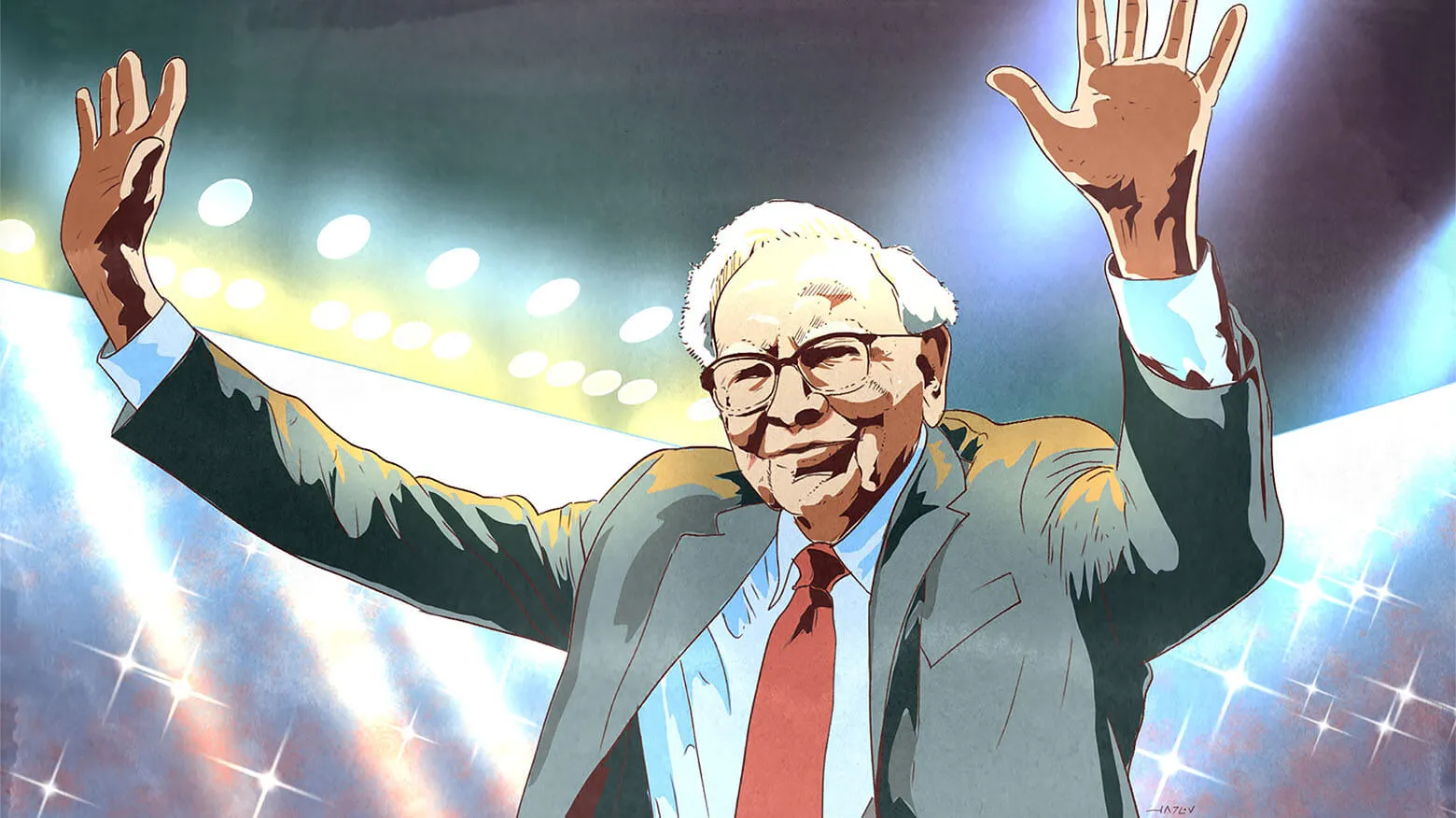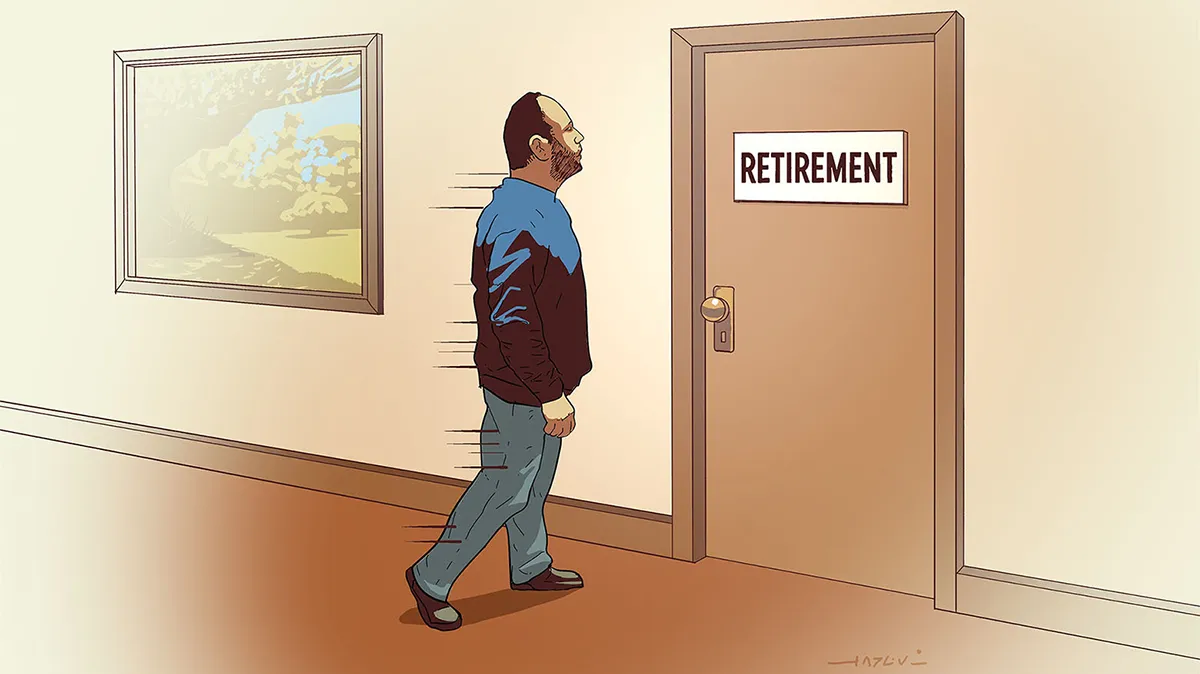- Let’s put our government spending and current deficits into proper context. Our GDP (revenue of the economy) is approximately $26 trillion, and our tax collection (revenue of the federal government) is around $4.8 trillion (18.5% of GDP).
Our government is expected to spend approximately $6.5 trillion in 2023, resulting in a $1.7 trillion budget deficit, or 6.5% of GDP.
The average maturity of debt owed by the Federal government is around six years. Therefore, we have yet to feel the full impact of interest rates going from nearly 0% to 5%. If interest rates remain where they are today, our annual interest expense will go from a few hundred billion to $1.6 trillion in six years, thus adding roughly another trillion or so to the current $1.7 trillion deficit, pushing our budget deficit into double digits as a percentage of GDP.
God forbid we have a recession somewhere in between; the government will throw in a few more trillion trying to cure it, adding more to the debt pile.
Higher interest rates are paradoxically both inflationary and deflationary. Inflationary because the US has $32 trillion of debt and we run multi-trillion-dollar annual budget deficits. Thus, higher interest rates force the US government to issue more debt – creating more money and thus devaluing the dollar. (This is a tailwind for commodities, but more on that later.)
It is also deflationary, because higher interest rates are impacting the consumption of goods that have to be financed – they make them expensive and thus reduce demand. - The economy has benefited from the US government running huge budget deficits and consumers spending government pandemic handouts. Pause and think about it: What would our growth be if the US government did not borrow and spend a few trillion dollars? The economy would be growing less, if it was growing at all (in real, inflation-adjusted terms).
Most people do not change their unhealthy lifestyles until they have a health scare, and the same applies to government spending. We are unlikely to alter our frivolous spending behavior, which would be painful for all members of society to various degrees, unless an external factor gives politicians a mandate to cut government spending and raise taxes.
It is likely that consumers will run out of pandemic savings before they give up their reckless spending. We are already seeing signs of that, with revolving credit going up. The consumer will soon turn from a tailwind into a headwind for the economy. - Today, the absolute level of interest rates is not very high by historical standards. Interest rates have returned to the low bound level observed in the 2000s. However, this line of thinking misses a very important nuance. Over the last two decades, low interest rates have seeped into the fabric of our behavior and the pricing of all assets, including stocks, bonds, real estate (residential and commercial), cars, businesses, insurance contracts, and more.
Most assets were priced at the incredibly low interest rates we observed over the last two decades; higher interest rates will lead to a repricing of these assets. Additionally, the affordability of assets that require financing (such as cars and houses) has declined dramatically. - Housing prices have to be looked at in relation to household income, and this relationship is at one of the highest levels in modern history. It gets worse. Housing affordability (the relationship of income to mortgage payment), a byproduct of housing prices and high interest rates, is at a forty-year low, freezing out first-time buyers.
Actually, housing is becoming unaffordable to almost any buyer – transactions in the housing market have come nearly to a halt. Homeowners don’t want to sell their houses and buy similarly priced houses, only to see their mortgage payments more than double as they trade in their 3% mortgages for 8% ones.
This sector cannot function well at these interest rates and these prices. Something will have to give; either interest rates or housing prices will have to decline, or both.
The housing sector is very important for the long-term health of the economy; housing prices drive consumer confidence and, consequently, consumer spending. I view the housing market as a giant dam built uphill of the economy. If (more like when) it breaks, it will flood the economy. The only way the dam will not break is if interest rates decline by… I don’t know, half?
- Office buildings account for about 1/6 of commercial real estate. Even before the pandemic, at near-zero interest rates, prices at which office buildings changed hands made little sense. At present interest rates, they make even less sense.
To make things much worse: It is not clear what future office occupancy will look like. Employees are demanding to work from home, and today they have the upper hand in this negotiation, as unemployment is low. As unemployment rises, employees will lose their bargaining power. However, higher unemployment will come with a lower demand for office space.
Office real estate appears to be a train wreck that cannot be stopped and will require significant pain for equity and debt holders in order to be resolved. Most of the debt related to office real estate is held on the balance sheets of smaller (not too big to fail) banks.
The benign economic environment – basically, no recession for more than a decade and low interest rates – has likely resulted in a large number of bad loans, which will surface when unemployment increases. The banking sector theoretically has more capital than it has had in decades, but higher interest rates have led to a decline in the value of banks’ assets and have reduced their capital ratios.
Also, if interest rates continue to rise, banks that hold long-duration assets (think housing mortgages) will have to take further write-downs to their shareholder capital. Avoiding banks or financial companies is an easy decision in today’s environment. - Unemployment, though very low by historical norms, is a lagging, rear-view-mirror indicator of the health of the economy. As companies’ revenues start decelerating and debt costs continue to rise (both compressing their margins), they will begin layoffs, which will lead to a greater slowdown and more layoffs.
Also, the unemployment number has its own flaws: It only measures how many people are looking for a job and have not found a job. The problem is that our labor participation rate (the proportion of people in the workforce either working or actively looking for a job) has been declining for decades; it is down from 67% in 2000 to 63% today, meaning our unemployment rate would be 4% higher if those who have dropped out of the labor force started looking for jobs again. - I have discussed the pitfalls of higher interest rates, but it is important to note that they are a great help to savers, especially since the rate of inflation is decreasing. Interestingly, higher interest rates are relieving the pressure from people who felt they had to work because their bond portfolio was yielding nothing, allowing them now to retire or remain retired.
- “Second marriages and the soft landing of the economy have one thing in common: they represent the triumph of hope over experience.” – Larry Summers
The market is debating whether we are going to have a recession. Just as winter follows autumn, I am 100% certain we are going to have a recession. But unlike with the seasons, I just don’t know when the recession will come. My biggest concern is not a recession but significantly slower economic growth in the future than we have observed over the last two decades – a payback time for decades of excesses.
Here is another way to think about it.
Supply and demand are being impacted by forces that are both temporary (side effects of the pandemic) and structural (highest indebtedness in the US history and high interest rates), and today the economy is deeply out of sync with its future equilibrium, where the supply of goods and debt will exceed demand. - I go through this writing and thinking exercise not to identify the next swerve in the economy but to think about significant risks and position our portfolio accordingly. What does that mean?
o We have very little exposure to businesses that rely heavily on consumers spending their discretionary income. Consumer discretionary income is going to be under attack for a long time.
o We mostly own noncyclical businesses. Demand for their goods is not tied to the health of the economy or the level of interest rates (no car companies or homebuilders).
It is impossible to create a diversified portfolio that is completely unaffected by the health of the economy. Furthermore, our goal is not to completely eliminate cyclicality from the portfolio but to own companies that will survive a potentially prolonged recession and emerge stronger at the end.
If we purchase a cyclical business (again, we own very few of them today), we need to be adequately compensated for the cyclicality. The company must become stronger and its earnings power needs to increase as a result of the recession. (As Nassim Taleb would put it, the company must be antifragile.)
o Inflation is a friend of companies that have debt-heavy balance sheets and that can raise prices; but while inflation is highly probable in the near term, it is not a certainty. Stagflation (inflation with a struggling economy) is another very possible outcome. For companies with debt-heavy balance sheets we do two additional tests. First, they need to be able to pay off every single maturity from their worst-case free cash flows, and secondly, we value them assuming their interest payments will reset to higher levels.
o We have the most conservatively positioned portfolio we have had in years. If the party on Wall Street continues, we expect to be the responsible kid at the party while others are getting plastered on the spiked fruit punch.
o We are not compromising on quality and margin of safety. In fact, during the quarter we did some minor cleanup (selling) of companies whose businesses were not as strong as we initially thought or the ones which were close to fair value.
o A key to successful investing is avoiding making forced decisions – decisions that are made on someone else’s terms. We are not making any decisions to buy anything that does not meet our stringent criteria for purchase. It is nice, for a change, that the opportunity cost of looking for a diamond in the rough has been so low, thanks to 5% short-term rates.
- In my March 2023 letter I outlined our investment strategy for the current environment:
o Worry macro (this is what I did above), invest micro (this is what I’ll discuss next letter).
o Look for companies that can survive and prosper in all of the above scenarios.
o Be process-driven – the market will likely be more bipolar than usual. Know what you own, why you own it, and how much it is worth.
o You need to have patience – wait for opportunities to come to you.
o Competitive intensity will likely increase when the economic pie is not growing. Stick to high-quality companies run by great people.
o Increase your margin of safety – you’ll need it.
o Don’t be afraid of cash (short-term bonds) when you don’t find opportunities. Cash is better than overvalued stocks or low-quality companies – or especially the combination of the two.
o Look for stocks in other markets – they expand choice greatly.
o Don’t time markets; it’s impossible to put market timing into a process. Buy undervalued companies and sell them when they are dear.
o “Sell” is a four-letter word in secular bull markets; it is an important practice during sideways markets.
Key takeaways
- The US economy is facing significant challenges due to high government spending, rising interest rates, and a potential recession, with the budget deficit expected to reach double digits as a percentage of GDP.
- Higher interest rates are both inflationary (due to increased government borrowing) and deflationary (reducing demand for financed goods), creating a complex economic environment.
- The housing market and commercial real estate sector are under pressure from high interest rates, potentially leading to a significant economic downturn if these markets collapse.
- The economy has been artificially propped up by government spending and pandemic savings, but as these factors fade, consumer spending is likely to become a headwind rather than a tailwind.
- In response to these economic conditions, your investment strategy focuses on non-cyclical businesses, companies with strong balance sheets, and maintaining a conservative portfolio with a high margin of safety.









0 comments